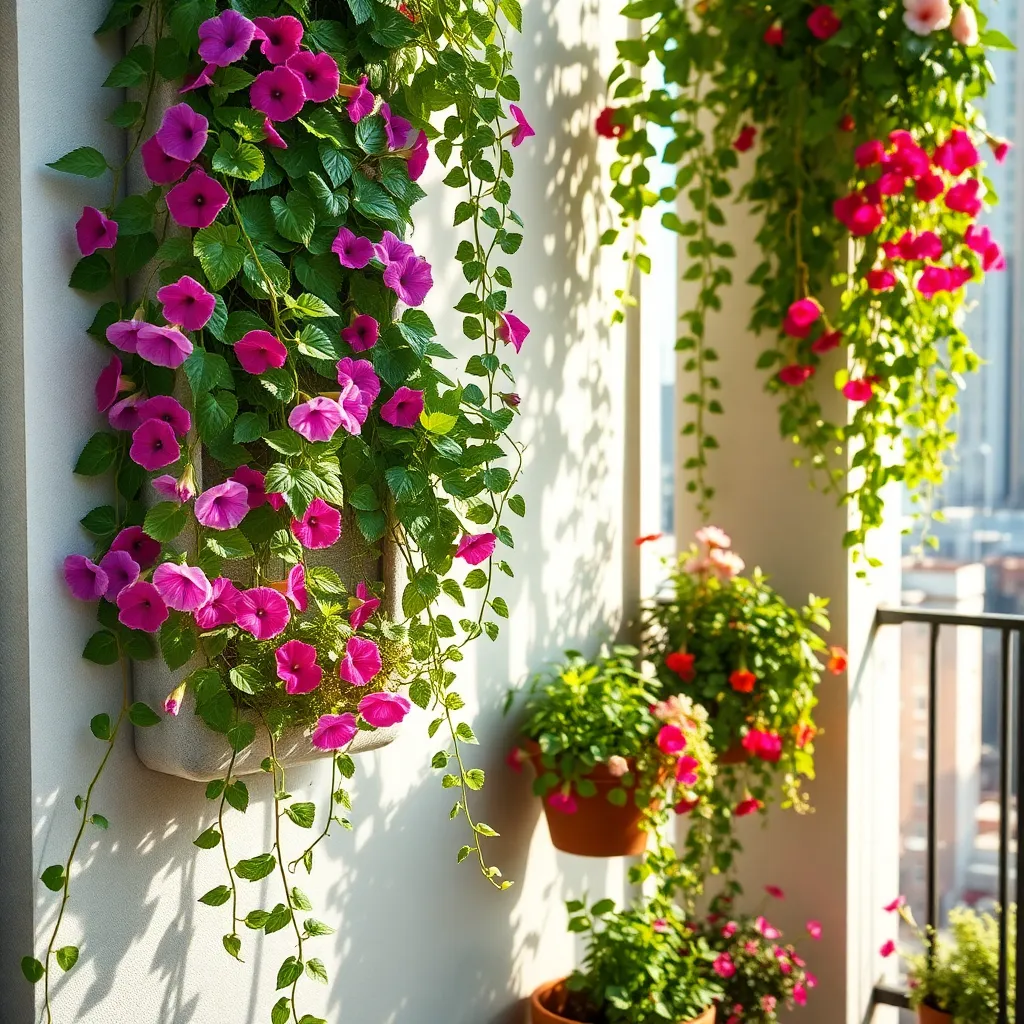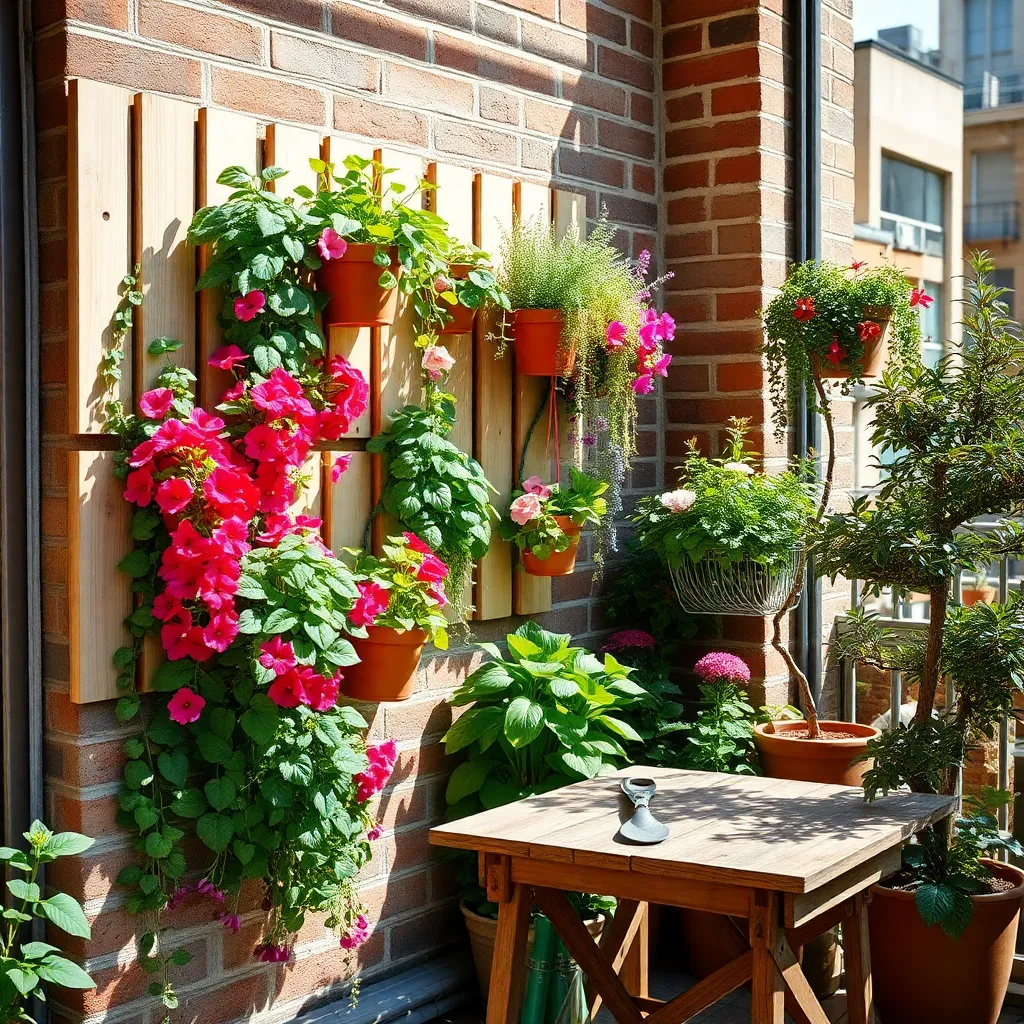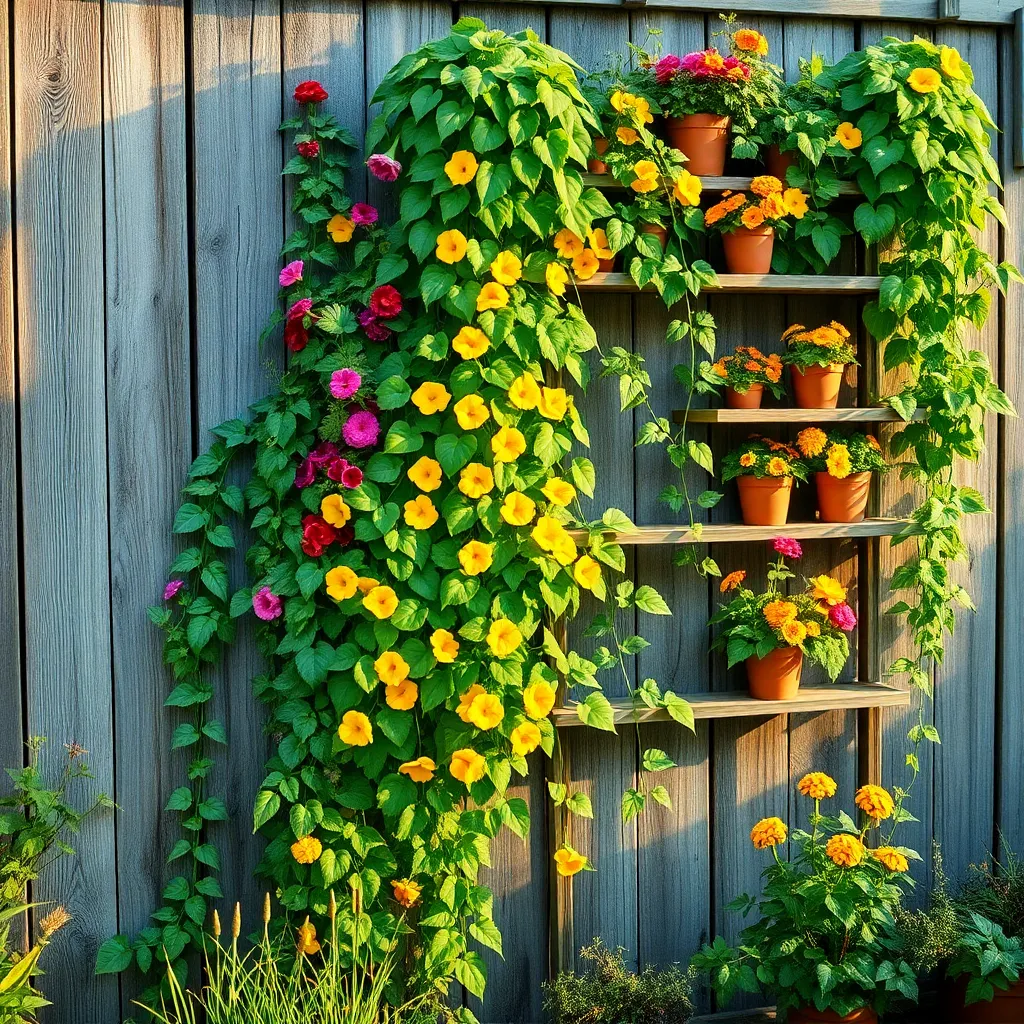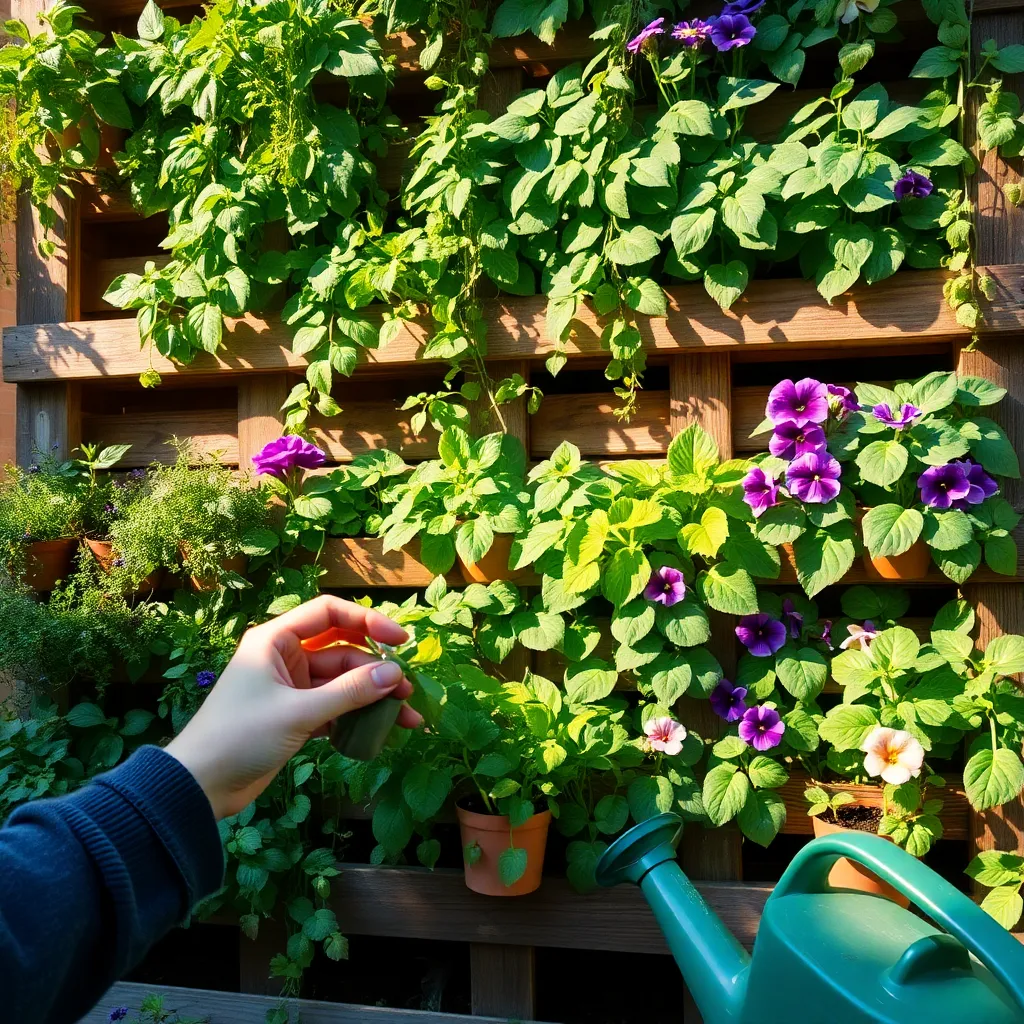Welcome to the exciting world of vertical gardening, where small spaces transform into lush, thriving oases! Whether you’re a budding gardener just starting out or a seasoned green thumb looking to maximize your urban jungle, this guide offers a treasure trove of creative ideas that will elevate your gardening game. Here, you’ll find inspiration and practical solutions to grow up, not out, making the most of every inch available.
Incorporating vertical gardening techniques not only enhances the beauty of your space but also brings a multitude of benefits right to your doorstep. From improving air quality to providing fresh produce and herbs within arm’s reach, the possibilities are as endless as they are rewarding. With our curated list of designs, you’ll feel empowered to cultivate a garden that reflects both your personal style and the unique constraints of your space.
Dive into this adventure with confidence, knowing that every idea is backed by practical advice and proven techniques to ensure your success. As you turn these pages, envision the joy of watching your garden flourish vertically, bringing life, color, and even a little bit of magic into your small space. Let’s get started on creating your very own vertical paradise, where gardening dreams come true and every leaf tells a story.
Choose Lightweight Vertical Planters

When selecting vertical planters for small spaces, opting for lightweight materials is essential. Materials like plastic, fabric, or recycled materials are perfect choices as they are easy to maneuver and install without heavy lifting.
Consider using fabric pockets or wall-mounted planters that can be easily attached to fences or walls. These solutions not only save space but also allow for excellent drainage and air circulation, which is ideal for healthy plant growth.
For beginners, start with easy-to-grow plants such as herbs or succulents, which thrive in limited soil and require less frequent watering. Place your vertical planters in a spot with adequate sunlight, adjusting location if needed based on the specific light requirements of your plants.
- Use a well-draining potting mix to prevent root rot.
- Water consistently but sparingly, ensuring the topsoil dries out between watering sessions.
- Fertilize monthly with a balanced liquid fertilizer to promote healthy growth.
Advanced gardeners can experiment with more complex vertical setups, such as hydroponic systems, for a modern touch. These systems require careful monitoring of nutrient levels and regular maintenance but can yield impressive results in a compact space.
Install Sturdy Wall Mounts

Wall mounts are crucial for securely supporting your vertical garden, ensuring safety and stability. Choose mounts made of heavy-duty materials like stainless steel or powder-coated metal to withstand weather elements.
Ensure the wall you select can handle the weight of your vertical planters, especially when they are fully watered. Use a stud finder to locate and attach mounts to wall studs, providing the necessary support and preventing damage.
For beginners, start with simple mounting brackets that are easy to install and adjust. Advanced gardeners might consider modular systems that allow for customizable layouts and expansion as your plant collection grows.
Always check the weight limit of your wall mounts and do not exceed it, especially if you plan to grow heavier plants like tomatoes or cucumbers. Regularly inspect the mounts for any signs of wear or rust, replacing them as needed to ensure your garden remains secure.
Select Sun-Loving Plant Varieties

When selecting sun-loving plants for your vertical garden, consider varieties that thrive in full sunlight and add vibrant colors to your space. Succulents and herbs, like rosemary and thyme, are excellent choices as they require minimal water and care once established.
To ensure healthy growth, use a well-draining soil mix that allows excess water to escape, preventing root rot. Incorporating a cactus or succulent blend with added perlite will help maintain the right moisture levels for your sun-loving plants.
Watering should be done sparingly for these plants, typically once a week, or when the top inch of soil feels dry to the touch. During hotter months, you might need to increase watering frequency slightly, but always err on the side of dryness to avoid overwatering.
Advanced gardeners might experiment with incorporating flowering sun-lovers like bougainvillea or morning glory, which can add vertical color and texture. These require more frequent pruning to manage growth, but they reward you with a stunning display of blooms throughout the growing season.
Regularly check for pests such as aphids or spider mites, especially in warmer months, as they can quickly spread in vertical settings. A gentle spray of neem oil can help keep these pests under control without harming your plants or the environment.
Incorporate Drip Irrigation Systems

Incorporating a drip irrigation system into your vertical garden is a smart way to ensure consistent watering. This method delivers water directly to the root zone, reducing evaporation and water waste, making it ideal for small spaces.
Start by selecting a drip irrigation kit that suits the size of your vertical setup. Most kits come with adjustable emitters that allow you to control the flow rate, ensuring each plant receives the optimal amount of moisture.
Installation is straightforward: simply weave the tubing through your vertical garden structure and secure it with clips or ties. Be sure to position emitters near the base of each plant, so they effectively target the root systems.
For beginners, it’s crucial to set a timer that aligns with the specific water needs of your plant varieties. Experienced gardeners might consider using a soil moisture sensor to automate the system, ensuring plants receive just the right amount of moisture without constant supervision.
Rotate Plants for Even Growth

Rotating plants in your vertical garden is crucial for ensuring even growth and preventing any part of the plant from receiving too much or too little sunlight. By turning your planters or pots every week, you can promote balanced exposure to light, which encourages symmetrical growth and prevents one-sided leaning.
Consider setting a reminder on your phone or calendar to help you remember to rotate your plants regularly. This simple practice can make a significant difference, especially in small spaces where light may not be uniformly available.
When rotating plants, it’s essential to monitor the soil moisture and adjust watering accordingly, as plants may have different water needs based on their position. Soil types like well-draining potting mix with added perlite or vermiculite can help maintain optimal moisture levels, reducing the risk of root rot.
For those with more experience, try experimenting with plant placement based on each species’ light preference. Track the growth patterns and adjust rotations to maximize light exposure for sun-loving plants while providing shade to those that prefer cooler conditions.
Conclusion: Growing Success with These Plants
As we conclude our exploration of vertical gardening ideas for small spaces, let’s recap the five key relationship concepts that can transform not just your garden, but your connections as well. First, nurturing growth reminds us to invest time and care into our relationships. Secondly, adaptability teaches us to embrace change and innovation in how we connect with others. Third, utilizing available space efficiently mirrors our need to make the most of the emotional space we share with loved ones. Fourth, creativity in design inspires us to think outside the box in nurturing bonds. Lastly, sustainability encourages us to build relationships that are enduring and resilient.
Now, as an actionable step, choose one of these concepts to focus on today. Perhaps start with a small, creative gesture to show appreciation to a loved one, or rethink how you allocate time to your relationships.
Be sure to bookmark this article as a handy guide for enriching your personal connections, and refer back to it whenever you need inspiration. Remember, the seeds of successful relationships are sown with intention and care, and your commitment today can lead to flourishing connections tomorrow. Embrace the opportunity to cultivate your relationships with the same enthusiasm you would your vertical garden.

